A KitchenAid refrigerator is a popular appliance in many homes, known for its high-quality construction and reliable performance.
However, like any other appliance, it can experience issues from time to time. Two common problems are KitchenAid Refrigerator Lights and Water Not Working.
These issues can be frustrating and may interfere with the normal functioning of the refrigerator.
In this article, we will explore the possible causes of these problems and provide some troubleshooting tips to help users resolve them.
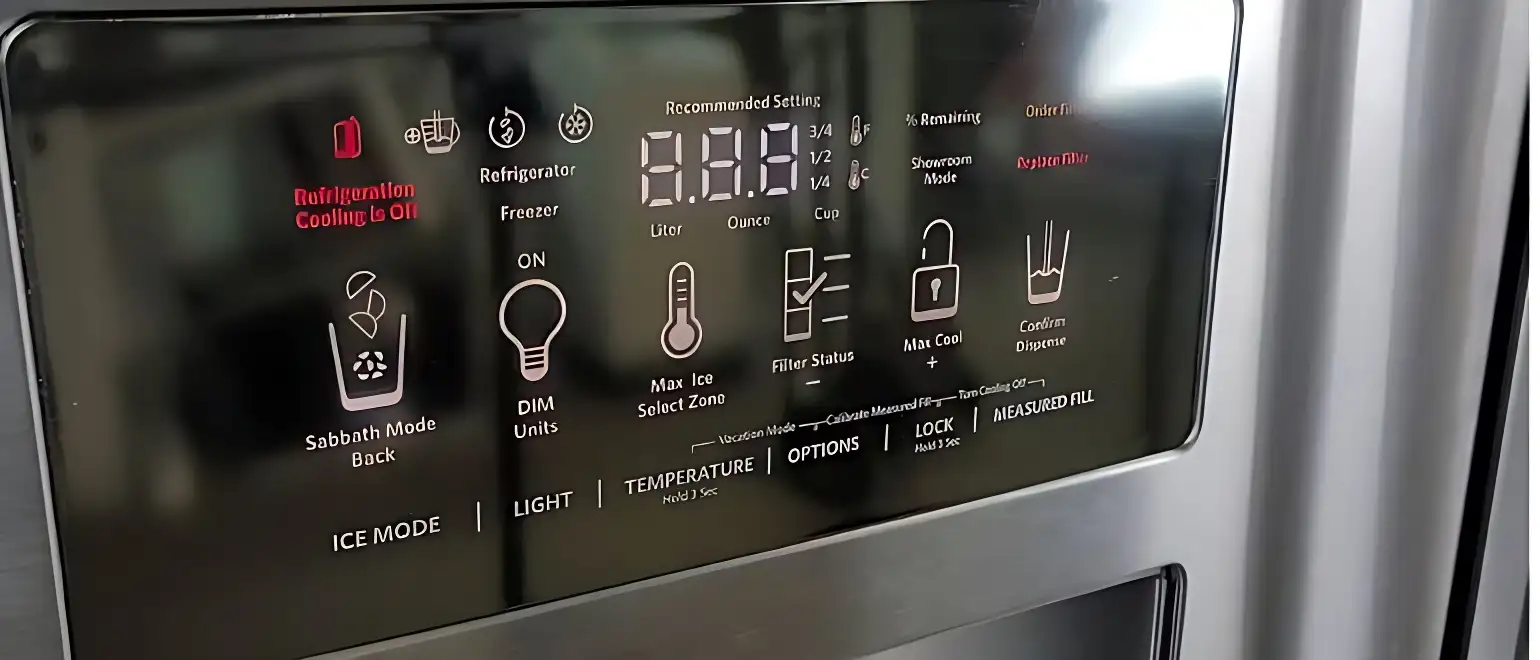
Common Causes of KitchenAid Refrigerator Lights Not Working
When the lights in your KitchenAid refrigerator stop working, it can be frustrating and make it difficult to find what you need. There are a few common causes for this issue, including:
Burned-out Light Bulbs
Over time, the bulbs in your refrigerator may burn out, just like any other light bulbs in your home. Check to see if the bulbs need to be replaced.
Faulty Light Sockets
If the bulbs are not the problem, the light sockets themselves may be faulty. You can check this by using a multimeter to test for continuity.
Door Switch Issues
Your refrigerator’s door switches play an important role in turning the lights on and off. If they are not functioning properly, the lights may not work as intended.
Wiring Problems
Faulty wiring can also cause issues with the lights in your refrigerator. This can be more difficult to diagnose and fix, so it may be best to call a professional if you suspect this is the issue.
Troubleshooting Guide for KitchenAid Refrigerator Light Issues
If you’re experiencing issues with the lights in your KitchenAid refrigerator, there are a few troubleshooting steps you can take before calling a professional:
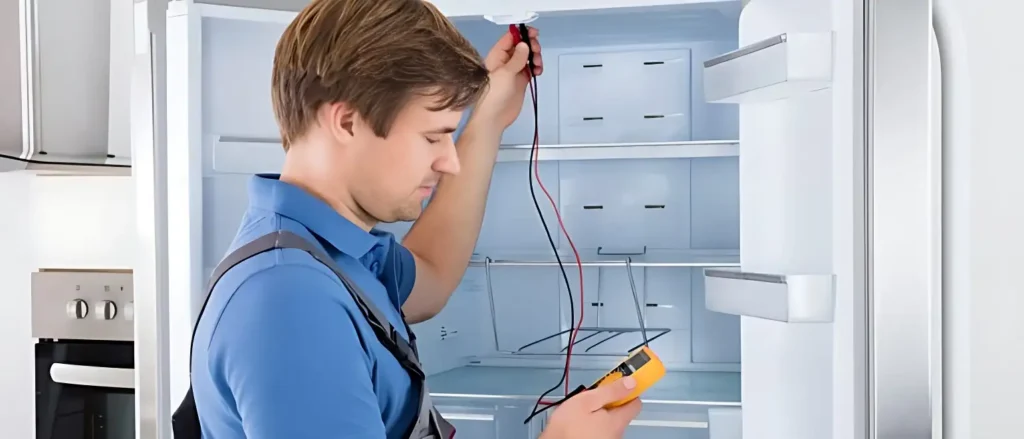
Check the Light Bulbs
As mentioned earlier, the bulbs may need to be replaced. Make sure to turn off the power to the refrigerator before attempting to change the bulbs.
Test the Light Sockets
If the bulbs are not the problem, you can test the sockets themselves using a multimeter. If they are not functioning properly, you may need to replace them.
Inspect the door switches: Check to make sure that the door switches are functioning properly. You can test them using a multimeter as well.
Look for Wiring Issues
If you suspect that there may be a wiring issue, you can try inspecting the wiring for any obvious signs of damage or wear.
However, it’s important to remember that working with electrical wiring can be dangerous, so it may be best to call a professional if you’re not comfortable doing this yourself.
How to Fix the Water Dispenser Not Working in a KitchenAid Refrigerator
If your KitchenAid refrigerator’s water dispenser has stopped working, there are a few things you can do to troubleshoot the issue:
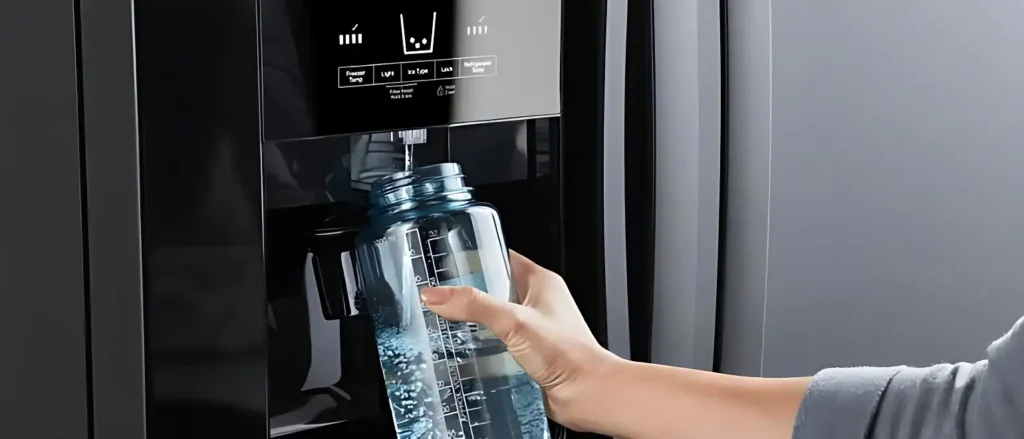
Check the Water Supply
Make sure that the water supply to the refrigerator is turned on and that there are no kinks or clogs in the supply line.
Inspect the Water Filter
If your refrigerator has a water filter, it may need to be replaced. Check the owner’s manual to see how often the filter should be changed and replace it if necessary.
Test the water inlet valve: The water inlet valve is responsible for allowing water to flow into the dispenser. You can test it using a multimeter to see if it’s functioning properly.
Look for Other Issues
If none of the above steps have resolved the issue, there may be a more significant problem with the dispenser system. In this case, it’s best to call a professional to diagnose and fix the problem.
Common Causes of KitchenAid Refrigerator Water Dispenser Issues
A water dispenser that’s not working in your KitchenAid refrigerator can be frustrating. Some of the common causes for this issue include:
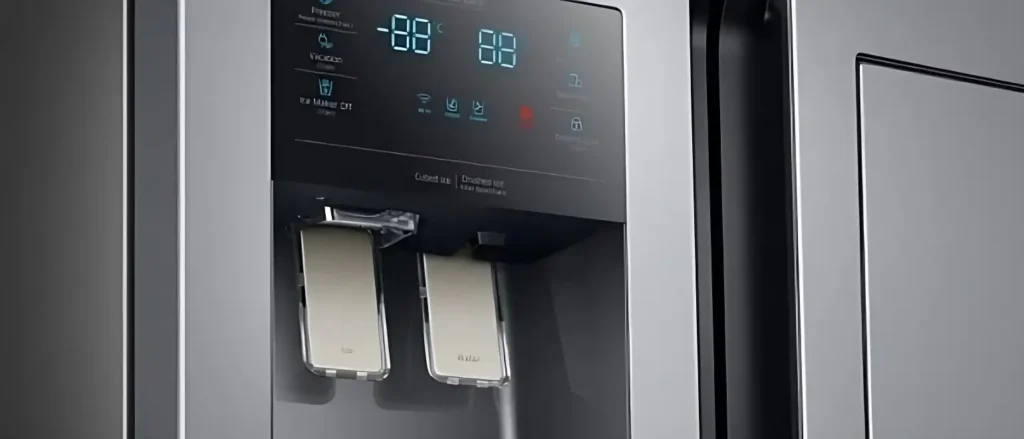
Clogged Water Filter
If the water filter in your refrigerator is clogged, it can restrict the flow of water to the dispenser. This can result in slow dispensing or no water at all.
Frozen water line: If the water line in your refrigerator freezes, it can block the flow of water to the dispenser. This can happen if the temperature in the freezer is too low.
Faulty Water Inlet Valve
The water inlet valve controls the flow of water into the refrigerator. If it’s not working properly, water may not be able to flow through the dispenser.
Electrical Issues
Problems with the electrical components of your refrigerator can also cause issues with the water dispenser. This may include issues with the control board or wiring.
Troubleshooting Guide for KitchenAid Refrigerator Water Dispenser Issues
If you’re experiencing issues with the water dispenser in your KitchenAid refrigerator, there are a few things you can try to troubleshoot the issue:
Check the Water Filter
If the water filter is clogged, it can be replaced. Make sure to follow the manufacturer’s instructions for replacing the filter.
Inspect the Water Line
Check the water line for any signs of damage or kinks. If it’s frozen, you can try turning up the temperature in the freezer to thaw it out.
Test the Water Inlet Valve
The water inlet valve can be tested using a multimeter to see if it’s functioning properly. If it’s not, it may need to be replaced.
Look for Other Issues
If none of the above steps have resolved the issue, there may be a more significant problem with the dispenser system. In this case, it’s best to call a professional to diagnose and fix the problem.
How to Reset the Water Filter in a KitchenAid Refrigerator
If you’ve replaced the water filter in your KitchenAid refrigerator and the filter indicator light is still on, you may need to reset the filter. Here’s how to do it:
Locate the Filter Button
The location of the filter button may vary depending on the model of your refrigerator. It’s usually located on the control panel.
Press and Hold the Filter Button
Press and hold the filter button for 3-5 seconds until the indicator light changes from red to green.
Release the Button
Once the light changes, release the filter button.
Verify the Reset
Check the indicator light to make sure it’s turned off or changed to green. This indicates that the filter has been successfully reset.
Note that the reset process may vary slightly depending on the model of your refrigerator. Check the owner’s manual for specific instructions.
Tips for Maintaining Your KitchenAid Refrigerator
Maintaining your KitchenAid refrigerator is important to ensure it continues to work efficiently and effectively. Here are some tips to help you keep your refrigerator in top condition:
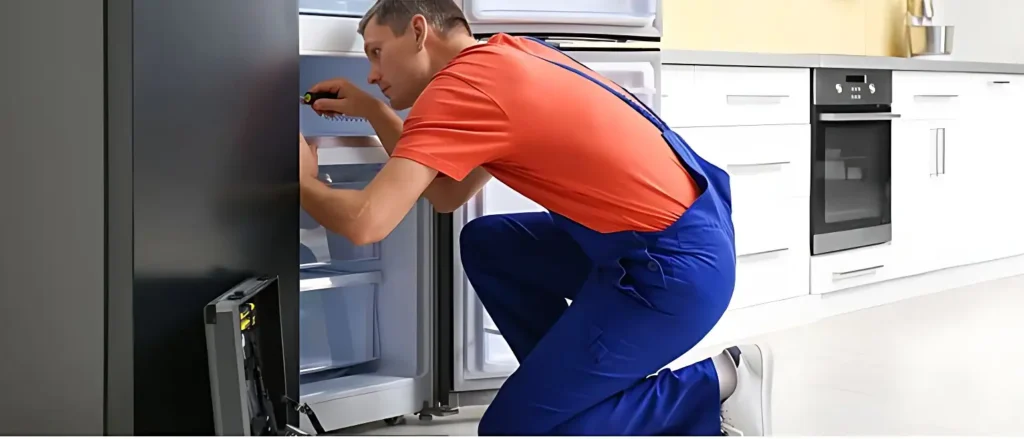
Keep it Clean
Regularly cleaning the inside of your refrigerator can help prevent the buildup of dirt, grime, and bacteria.
Use mild soap and warm water to clean the interior, and make sure to wipe down spills and messes as soon as they happen.
Check the Door Seals
The door seals on your refrigerator are important for keeping cold air inside. Check them regularly for any signs of damage or wear, and replace them if necessary.
Keep it Organized
An organized refrigerator can help you find what you need quickly and easily. Keep items together and use bins and containers to help keep everything in its place.
Check the Temperature
The temperature inside your refrigerator should be between 35 and 40 degrees Fahrenheit, while the temperature in the freezer should be around 0 degrees Fahrenheit. Use a thermometer to check the temperature regularly and adjust as necessary.
Clean the Coils
The coils on the back of your refrigerator can collect dust and debris over time, which can make it less efficient. Use a vacuum or a coil brush to clean the coils at least once a year.
Change the Water Filter
If your refrigerator has a water filter, make sure to replace it according to the manufacturer’s instructions. This will help keep your water clean and fresh.
Don’t Overfill It
Overfilling your refrigerator can prevent air from circulating properly, which can make it less efficient. Make sure to leave some space between items to allow for proper airflow.
FAQs
How Often Should I Replace The Water Filter In My KitchenAid Refrigerator?
The frequency with which you should replace the water filter in your KitchenAid refrigerator will vary depending on the model and usage. Check the owner’s manual for specific recommendations, but a general guideline is to replace the filter every 6 months.
How Can I Reset The Water Filter In My KitchenAid Refrigerator?
To reset the water filter in your KitchenAid refrigerator, locate the filter button on the control panel, press and hold it for 3-5 seconds until the indicator light changes, and then release the button. Check the indicator light to make sure it’s turned off or changed to green, indicating that the filter has been successfully reset.
How Can I Prevent Issues With My KitchenAid Refrigerator Lights And Water Dispenser?
Regular maintenance can help prevent issues with your KitchenAid refrigerator lights and water dispenser. This includes cleaning the inside of the refrigerator, checking the door seals, keeping the temperature at the proper levels, cleaning the coils, and not overfilling the refrigerator.
Final Words
If you’re experiencing issues with the lights and water dispenser on your KitchenAid refrigerator, there are several possible causes, including faulty wiring,
a malfunctioning control board, or a defective door switch. By following the troubleshooting steps outlined in this article,
you should be able to diagnose and fix the problem. Remember to always prioritize safety when working with electrical components and to consult with a professional
if you’re unsure about any aspect of the repair process. By taking the time to properly address these issues, you can extend the lifespan of your
KitchenAid refrigerator and ensure that it continues to function properly for years to come.
